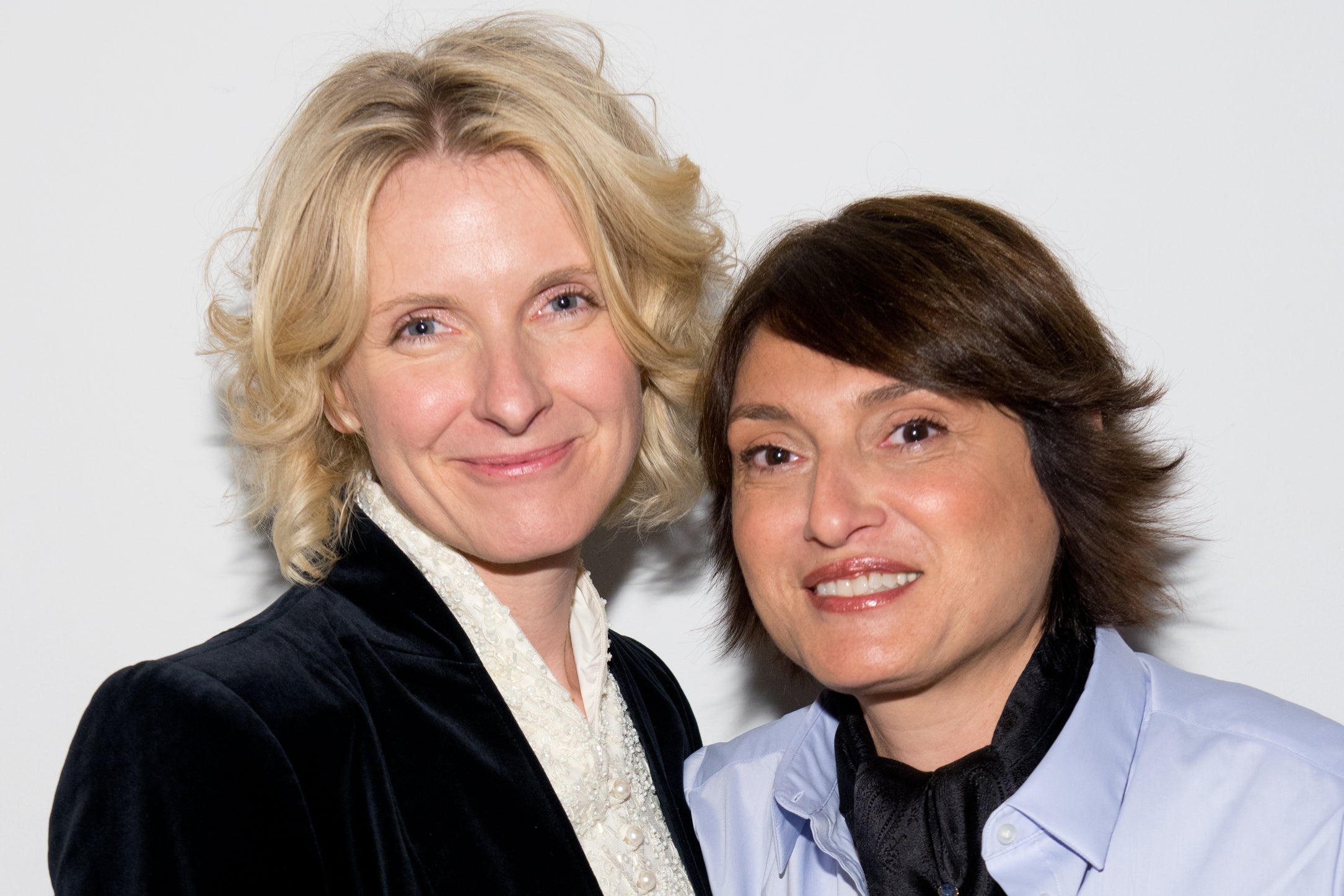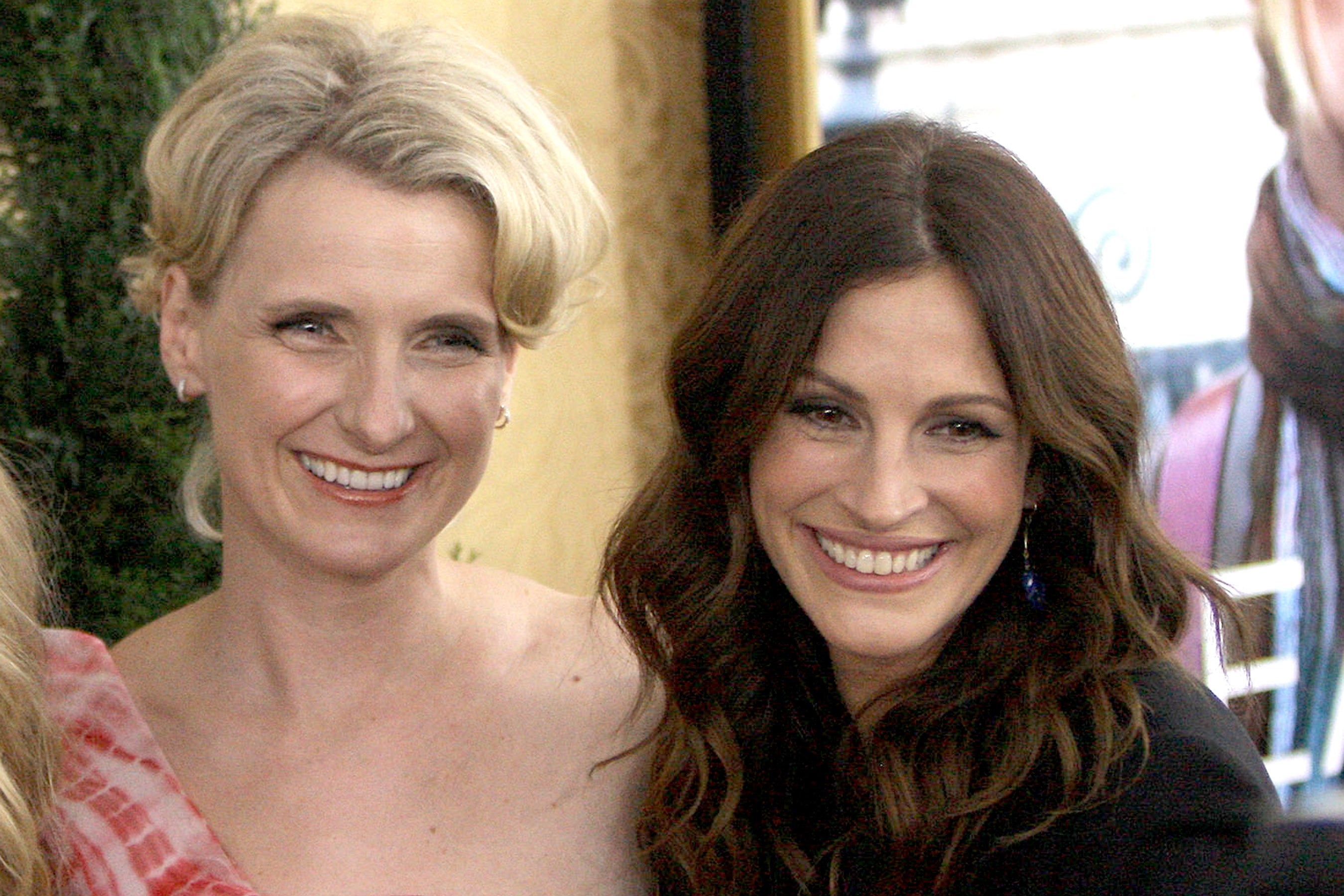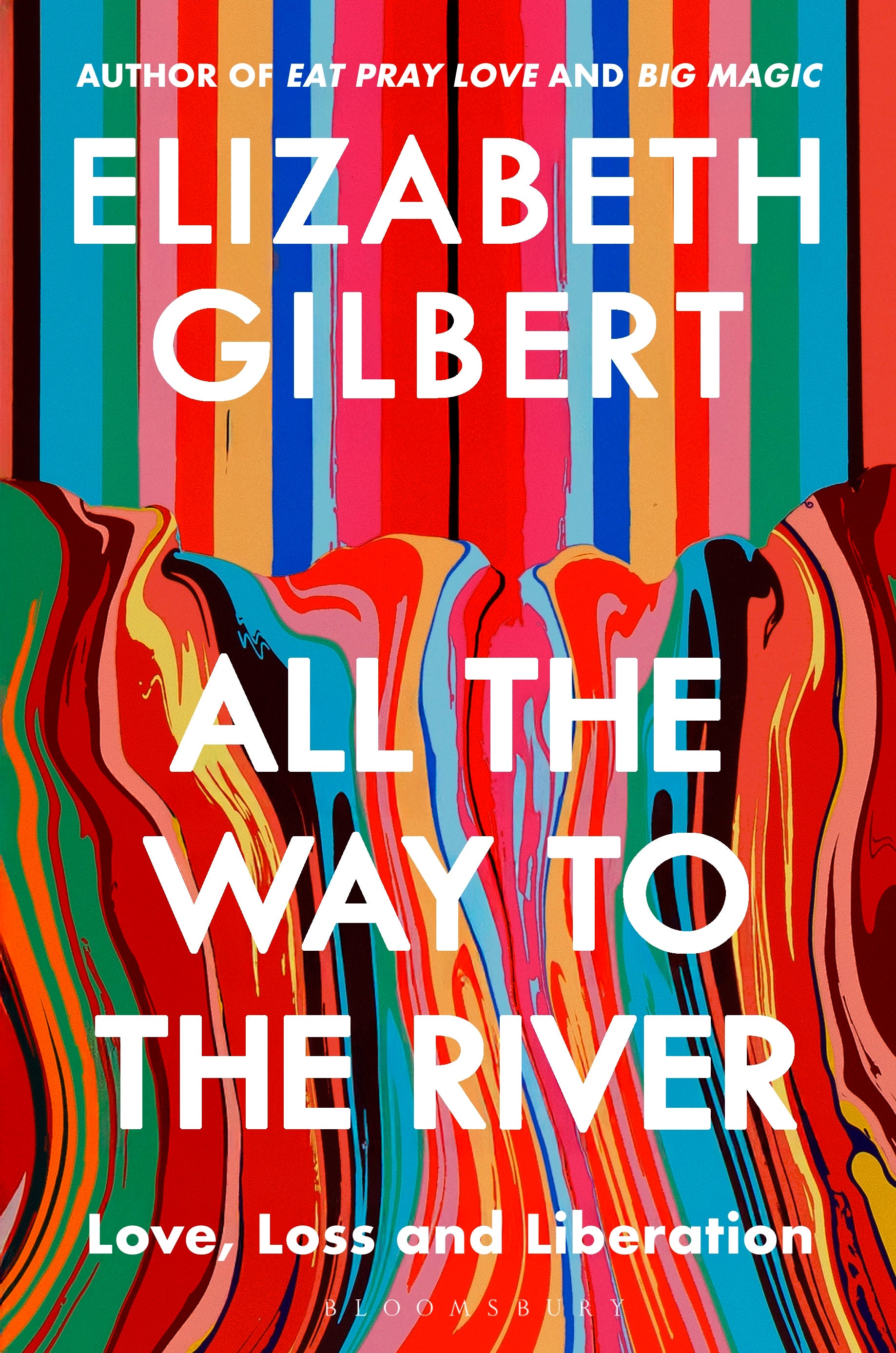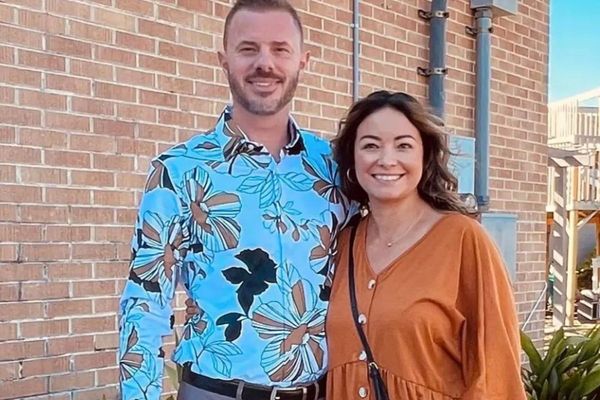
At the heart of Elizabeth Gilbert’s new memoir is a murder plot. It’s fleeting and sudden, and crucially, it never comes to fruition, but it’s an important checkpoint in her story. It’s vital the reader know that Elizabeth Gilbert, the blonde, bright author behind Eat Pray Love, the zen mastermind and spiritual seeker, had planned to kill her girlfriend by replacing her morphine tablet with sleeping pills, knocking her out for long enough to administer a lethal dose of fentanyl. “That would surely kill her,” Gilbert had hoped.
The confession arrives around the halfway mark of All the Way to the River: Love, Loss, and Liberation, Gilbert’s new book and a return to the genre of memoir that made her famous with 2006 behemoth Eat, Pray, Love: One Woman’s Search for Everything Across Italy, India and Indonesia. Chronicling her year-long, post-divorce journey around the world, that book (later adapted into a successful film starring Julia Roberts) made a star of its author and set the template for a new type of memoir that would dominate the publishing world in the years to come: white woman finds herself in beautiful, far-flung locales.
And so, murder? That’s not very Eat Pray Love. The same could be said of All the Way as a whole, really. Here are the basics: in 2000, Gilbert met Rayya Elias, a queer hairdresser and recovered drug addict who is everything Gilbert isn’t. Rayya is outspoken, wild, fearless; “I never once told anyone to f*** off,” laments Gilbert. When Rayya hits a rough patch years later, Gilbert moves her into a beautiful New Jersey church that she had purchased. (Acts of immense generosity were not unusual for Gilbert who, then newly flush from Eat Pray Love, was bestowing gifts and financial aid on anyone she crossed paths with).
The two become inseparable. Gilbert falls in love with Rayya but says nothing out of loyalty to her husband. It was only when Rayya, diagnosed with liver and pancreatic cancer, was given six months to live that Gilbert got a divorce and the two began a passionate, heady relationship. What followed is a whirlwind of lavish gifts, declarations of love, and copious drug use. Rayya said she needed opiates and cocaine to stave off the side effects of chemo. Gilbert complied and “boy, did we have fun”.
In the subsequent months, however, she found herself playing the part of a dysfunctional carer to an increasingly abusive patient. “I was looking at somebody who had once been the only person on Earth who could make me feel completely safe and loved, but who now verbally abused me all day long,” she writes, “telling me that I was ‘a f***ing s*** show of a failure’ when it came to taking care of her; that everything I was doing to try to help her was wrong; that I was a ‘needy little f***ing crybaby’ who had to ‘grow the f*** up’ and take care of myself.” Next, the murder plot, thwarted so casually by Rayya, who suspected Gilbert from the jump.

It’s around this time that Gilbert came to the realisation that Rayya was not the only addict. She, too, is an addict of sex and love. “I am addicted to people,” she writes, recognising that she had been a “full-on romantic obsessive by the time I was in grammar school” and was “out of control by the time I reached high school”. Describing her addiction, she continues, “soon I am neglecting my own life as I increasingly fixate upon the person who has become my source”. This, she says, is what happened with Rayya.
At the nadir of their twin addictions, Gilbert describes their apartment as “a dungeon of misery, danger, degradation, drugs”. Shades are drawn at all hours because Rayya is paranoid, certain that police are watching her just like the dragon behind her eyeball is. The police would have cause, admits Gilbert, recalling a coffee table littered with “thick rails” of cocaine, “an overflowing ashtray, a bottle of whisky, several bottles of morphine and trazodone and Xanax, a stack of fentanyl patches, and a cluster of empty beer bottles”. Italian gelato shops and Balinese forests, this is not.
As is reiterated across its pages, Gilbert’s story is really one about two addictions colliding. Her love and sex addiction and Rayya’s drug addiction growing into one another, feeding off each other in a sick, symbiotic relationship. Written in the aftermath of Rayya’s death, it’s also a tale about recovery and redemption.
The change in subject matter is grabbing, but perhaps the more important shift to consider (after all, why should the commercial success of Eat Pray Love box Gilbert into “the chick-lit dungeon”?) is the repositioning of Gilbert. Eat Pray Love cast her as an everywoman – privileged and a little woo-woo but relatable all the same with her self-deprecating humour and irrepressible natterings on. Here was a woman in her mid-thirties who had undergone a domestic shift in her life, and was working through it the best she knew how. Her journey was specific but the struggles she faced were identifiable to the millions who grafted her experiences onto their own. Gilbert didn’t need to say her story was relatable; that much was obvious.

There are hints of this familiarity in All the Way. In the beginning chapters, Gilbert expresses feelings that will be familiar to millions of readers: “I was hardly ever not worried that my life was going in the completely wrong direction, that I had made all the wrong choices, that I was a fraud, that there was something fundamentally bad and wrong about me, and that I should be ashamed of myself.” But there is no getting around it, this is an idiosyncratic story, an extraordinary timeline of events resulting from a very specific set of circumstances and personalities intersecting at exactly the right (or wrong) time.
Gilbert, however, insists otherwise. Sure, her story is specific on the surface – but isn’t it also, on a much deeper level, totally universal? She says as much in the opening pages, somewhat audaciously writing: “Even if your wheels have never fully come off, I suspect, at some level, that I might be you, and that you might be me, and that all of us might be Rayya.” Translation: you might not have attempted murder, but hey, we’re all the same here. The addict’s story is everyone’s story because haven’t we all searched for relief from “the sting of life”?
It’s a stretch, which is possibly the reason why Gilbert reiterates the supposed relatability so frequently. It feels at times like she is trying to justify the book’s existence to the reader. The story – her story – is important because it relates to you, too! And you, and you, and everyone in the world. By comparison, Eat Pray Love invited readers to draw their own conclusions, to find universality for themselves. In the decade since it was published, the memoir has invited derision from sceptics, no doubt due to the title’s linguistic proximity to “Live Laugh Love” – but the book is fantastic. A rare memoir that is anchored by its self-help narrative but never restrained by it. Gilbert roams and prowls, curls up, and stretches out with no destination in her sights.
The narrative of All the Way is more static, and part of that shift has to do with Gilbert’s approach. The landscape is different, we know that, but so too is the vantage point. In her most famous memoir, she was writing mise en scene, inviting readers into the glorious messiness of her travels and her inner workings as she took tentative steps in her quest for selfhood. In All the Way, she surveys the wreckage from above with all the hindsight and wisdom gained from the distance, and the work she has done with her 12-step programmes. In this way, Gilbert transforms herself from everyday woman to female guru. The book is also interspersed with interludes and doodles, some in the vein of Ram Dass, the late American spiritual leader of whom Gilbert is a fan. Her shift is also evident in the way she presents herself; her hugely popular Substack – “Letters from Love with Elizabeth Gilbert” – is categorised on the platform as Faith & Spirituality as opposed to Literature. She’s also shaved her head.
None of this is necessarily bad. The book is, in fact, very good, a compulsive read that is propelled not only by the drama of Gilbert’s story – which is risqué in its subject and unsparing in its detail – but her genial prose. By turns witty and devastating, Gilbert depicts this chapter of her life with her signature cards-on-the-table frankness. But there is a cost to becoming a guru: your readers are no longer walking alongside you, but trailing behind picking up the breadcrumbs you’ve left in your wake.

You can see the difference in All the Way itself; towards the end, Gilbert quotes herself having written about the same themes of infatuation and addiction in Eat Pray Love. The passage, penned in the early autumn of 2004, is visceral and raw – “the next stage finds you skinny and shaking in the corner, certain only that you would sell your soul or rob your neighbours just to have that thing one more time”. The musings of All the Way are visceral, too, but with a new forensic distance to them, framed in the context of the 12-step recovery pathway, the ideals of which are chopped and changed but essentially rehashed here. “It doesn’t matter whom or what an addict feels to be their spiritual archetype,” she writes. “The essential thing is only that they give themselves over to some sort of intelligence that is bigger than their own, laying down their inflated ego by admitting that their life has become unmanageable and that they definitely need some new management around here.”
All the Way to the River begs the question: where do women’s memoirs go from here? The past couple of decades, writers, following in Gilbert’s footsteps, have written about their 1,100-mile-long hikes (Cheryl Strayed), periods of sexual abstinence (Melissa Febos), and their religious upbringings (Tara Westover’s Educated). These are books that traverse all the weird and wonderful places women might find themselves. The point was, yes, to allow us to find common ground and draw parallels, but also to show that we lead unique lives that resist categorisation. Relatability isn’t the point of every story; connection isn’t reliant on seeing yourself in someone else. Gilbert’s tale, extraordinary and beautifully written as it is, could stand all on its own. The world doesn’t need another Eckhart Tolle; if anything, it needs more Elizabeth Gilberts.
‘All the Way to the River’ is published by Bloomsbury on 9 September
The best fiction, non-fiction, and memoir to read this September
Inside the life of the perfect nobody who was better than Shakespeare
Wild running gives me freedom, but I’m always looking over my shoulder
Sam Sussman thinks Bob Dylan might be his dad – and he’s written a book about it
Adam Kay: ‘Not many doctors can say their career highlight was meeting Matt Hancock’
Del Amitri’s Justin Currie: ‘Parkinson’s highlighted just how arrogant I used to be’







